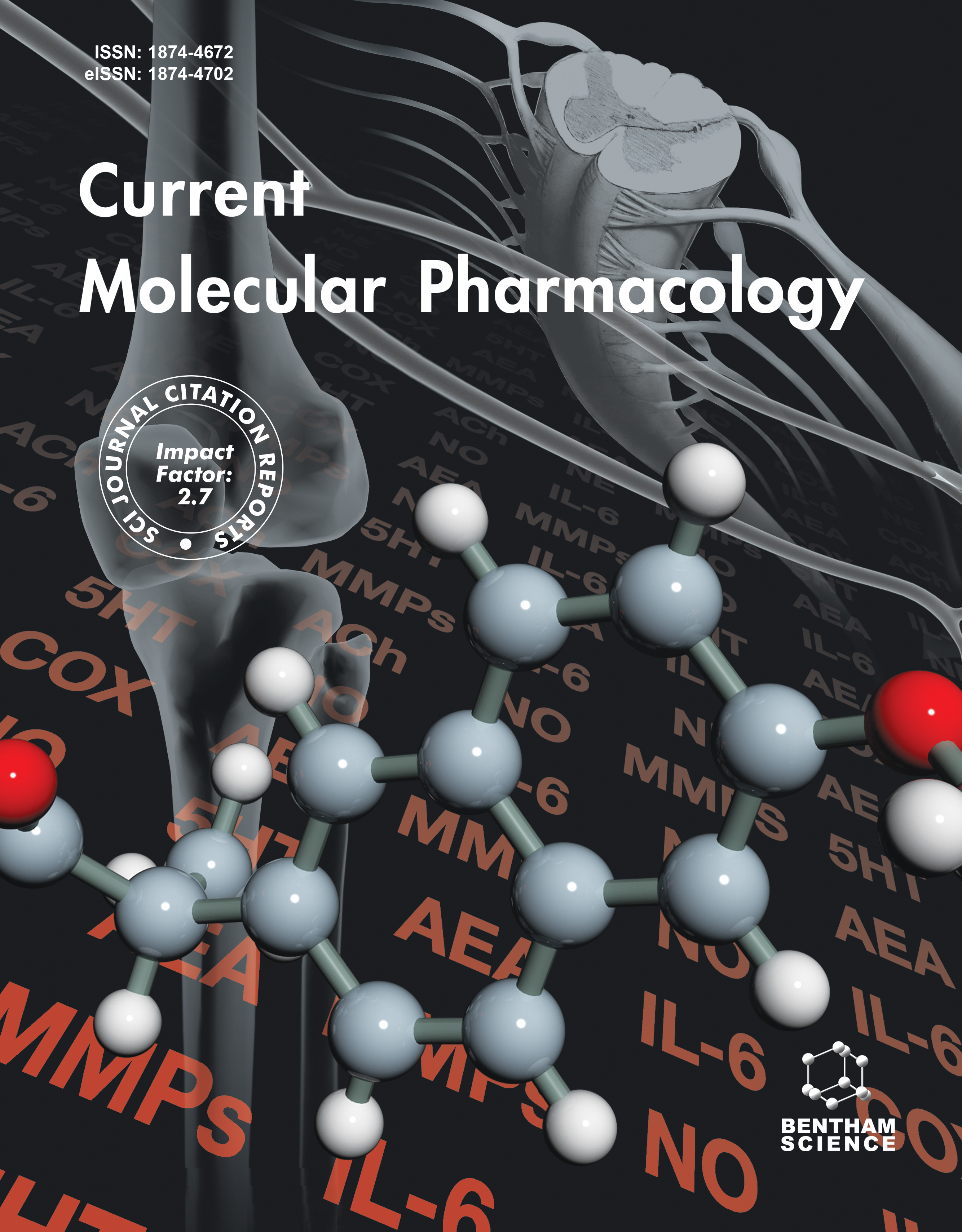- Home
- A-Z Publications
- Current Molecular Pharmacology
- Previous Issues
- Volume 13, Issue 4, 2020
Current Molecular Pharmacology - Volume 13, Issue 4, 2020
Volume 13, Issue 4, 2020
-
-
Hepatic Stellate Cell: A Potential Target for Hepatocellular Carcinoma
More LessAuthors: Mengna Wu, Huajie Miao, Rong Fu, Jie Zhang and Wenjie ZhengLiver cancer is a leading cause of cancer-related death worldwide, in which hepatocellular carcinoma (HCC) accounts for the majority. Despite the progression in treatment, the prognosis remains extremely poor for HCC patients. The mechanisms of hepatocarcinogenesis are complex, of which fibrosis is acknowledged as the pre-cancerous stage of HCC. Approximately, 80-90% of HCC develops in the fibrotic or cirrhotic livers. H Read More
-
-
-
Recent Updates in the Alzheimer’s Disease Etiopathology and Possible Treatment Approaches: A Narrative Review of Current Clinical Trials
More LessAuthors: Elahe Zarini-Gakiye, Javad Amini, Nima Sanadgol, Gholamhassan Vaezi and Kazem ParivarBackground: Alzheimer’s disease (AD) is the most frequent subtype of incurable neurodegenerative dementias and its etiopathology is still not clearly elucidated. Objective: Outline the ongoing clinical trials (CTs) in the field of AD, in order to find novel master regulators. Methods: We strictly reviewed all scientific reports from Clinicaltrials.gov and PubMed databases from January 2010 to January 2019. The search terms were Read More
-
-
-
Bacterial Siderophores and Their Potential Applications: A Review
More LessThe bacterial infection is one of the major health issues throughout the world. To protect humans from the infection and infectious agents, it is important to understand the mechanism of interaction of pathogens along with their susceptible hosts. This will help us to develop a novel strategy for designing effective new drugs or vaccines. As iron is an essential metal ion required for all the living systems for their growth, as well Read More
-
-
-
Evaluation of the Effects of 1,25 Vitamin D3 on Regulatory T Cells and T Helper 17 Cells in Vitamin D-deficient Women with Unexplained Recurrent Pregnancy Loss
More LessBackground: Vitamin D insufficiency and deficiency can be associated with adverse effects on pregnancy outcomes, which may include recurrent pregnancy loss through the mechanisms that are yet unknown. The aim of this study was to evaluate the effect of 1,25VitD3 on regulatory T cells (Tregs) and T helper17 (Th17) cell populations In vitro in unexplained recurrent pregnancy loss (URPL) patients and healthy women. Met Read More
-
-
-
Daclatasvir and Sofosbuvir Mitigate Hepatic Fibrosis Through Down-regulation of TNF-α / NF-ΚB Signaling Pathway
More LessAuthors: Sherin Zakaria and Alaa E. El-SisiBackground: Hepatic fibrosis is the major issue in chronic liver diseases such as chronic hepatitis C virus (HCV). The newly approved direct acting antiviral (DAA) agents such as Sofosbuvir (SOF) and daclatasvir (DAC) have been found to be associated with decreased fibrotic markers in HCV patients. Aim: This study tried to explore whether the reported antifibrotic effect of these drugs is antiviral dependent or drug induced. Read More
-
-
-
miR-18a-3p Encourages Apoptosis of Chondrocyte in Osteoarthritis via HOXA1 Pathway
More LessAuthors: Baiyang Ding, Shujuan Xu, Xiumin Sun, Jianming Gao, Wenlei Nie and Hongguang XuBackground: Osteoarthritis is a disorder of joints featuring inflammation and degeneration of articular cartilage. Recently, miRs have been found to be associated in the regulation of chondrocytes and their apoptosis. miR-18a-3p has been found to be associated in the pathogenesis of rheumatoid arthritis, however, its role in articular cartilage tissues remains unclear. Methods: C57BL/6 strain of mice and human cartilag Read More
-
-
-
Mechanism Involved in Fortification by Berberine in CDDP-Induced Nephrotoxicity
More LessBackground: The activation of Nrf2/HO-1 pathway has been shown to protect against cisplatin- induced nephrotoxicity by reducing oxidative stress. Berberine (Ber), an isoquinoline alkaloid, has demonstrated antioxidant, anti-inflammatory and anti-apoptotic activities in various experimental models. Aim: To check the effect of Ber on cisplatin-induced nephrotoxicity and to explore the involved mechanism. Methods: Adult male Read More
-
Most Read This Month
Article
content/journals/cmp
Journal
10
5
false
en


